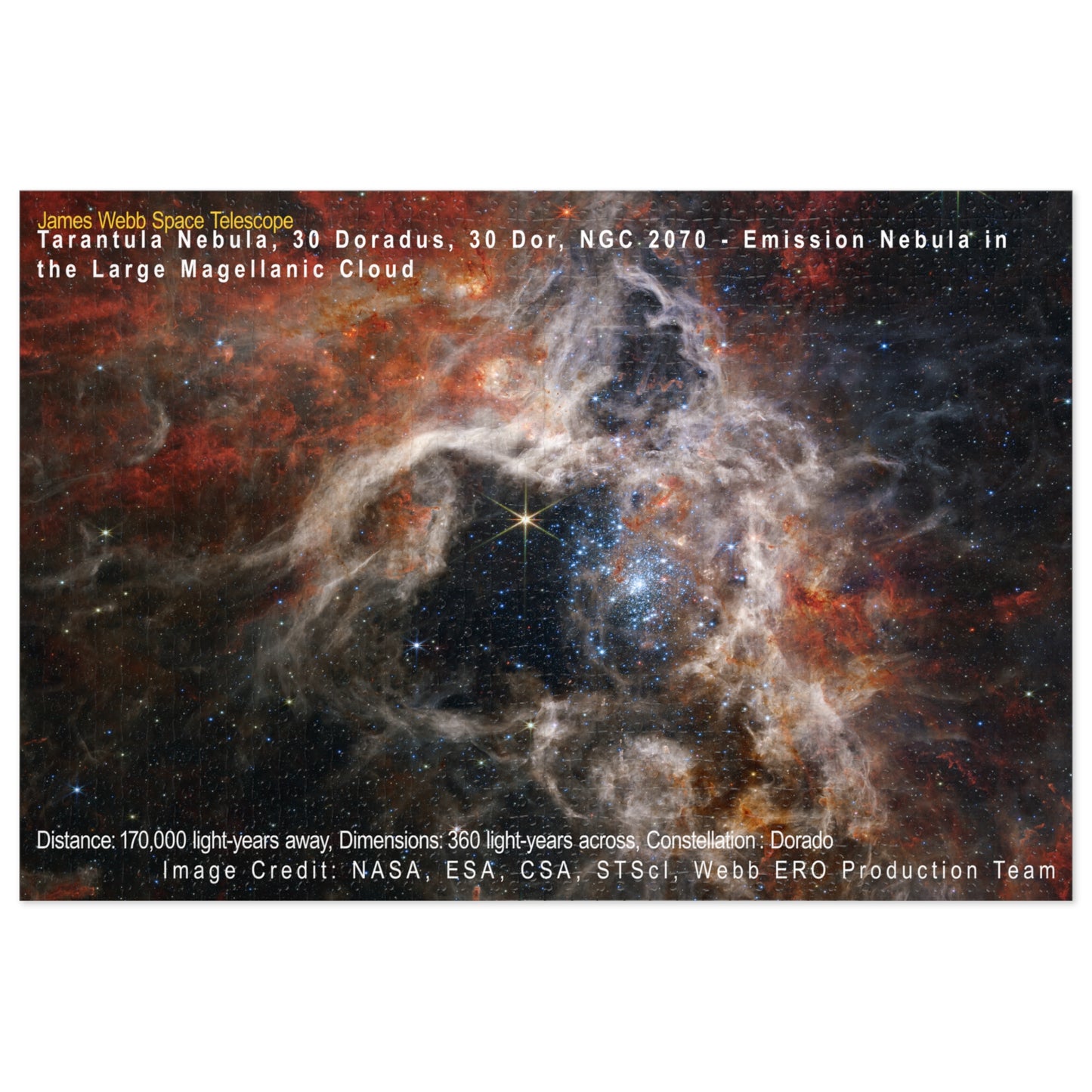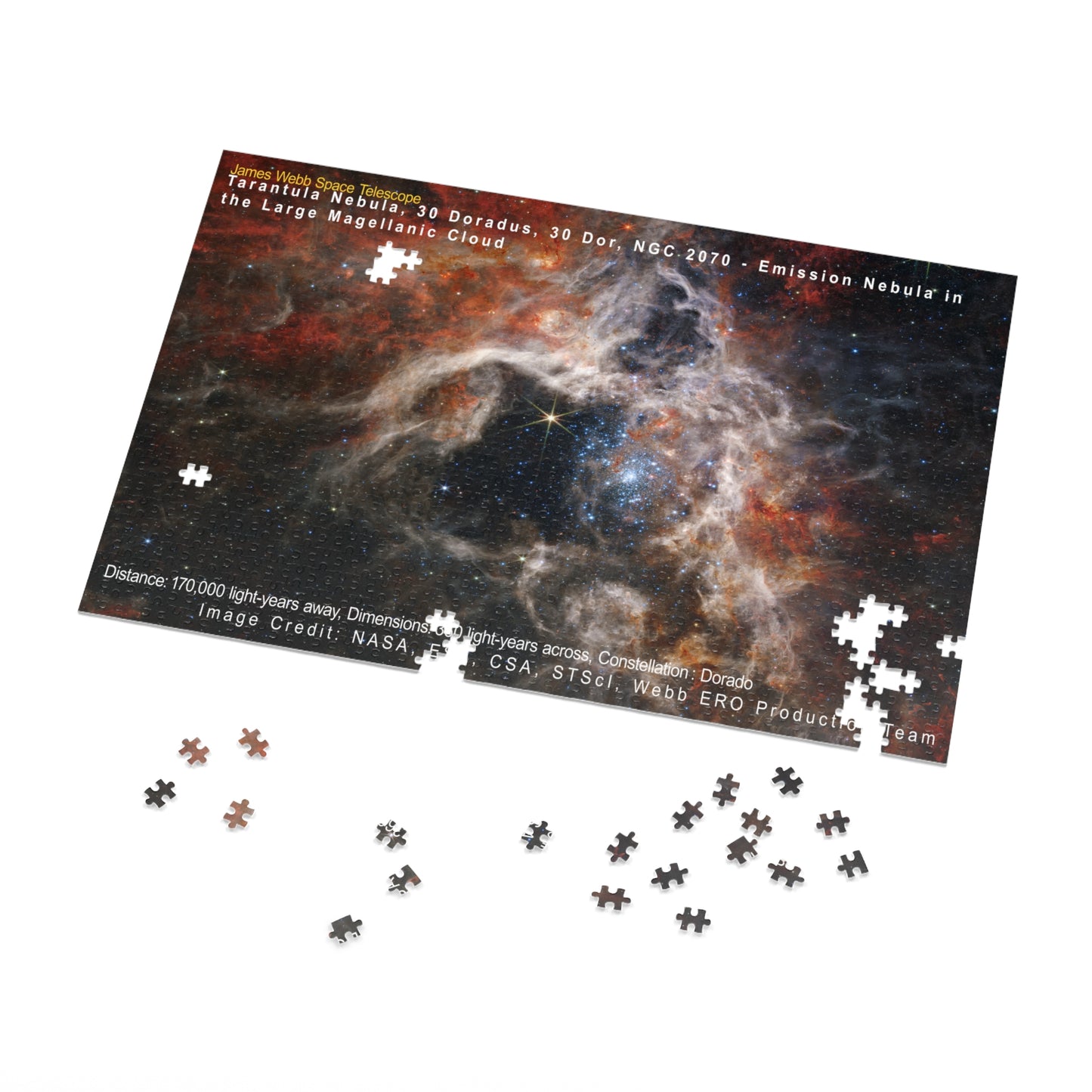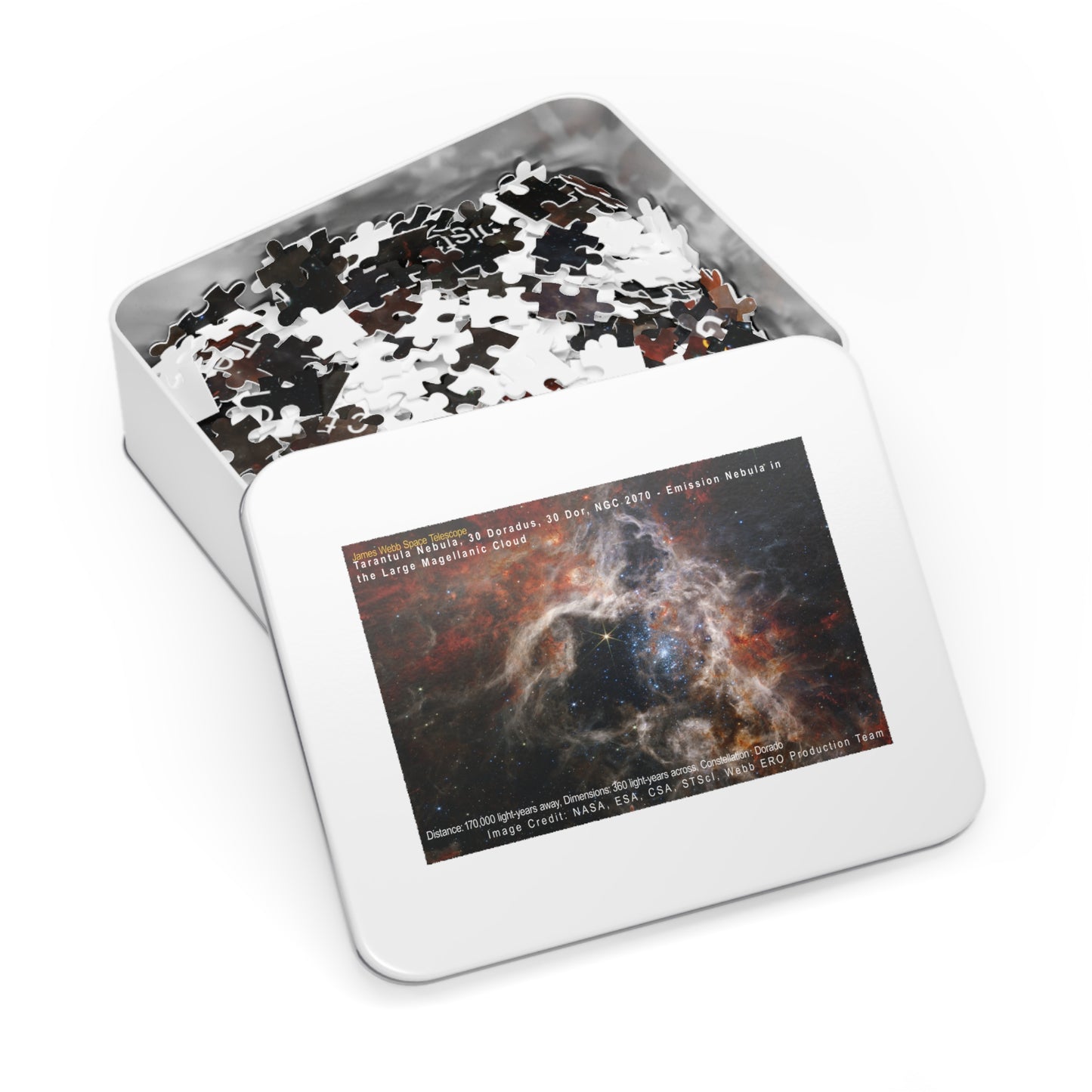Tarantula Nebula, Jigsaw Puzzle
Tarantula Nebula, Jigsaw Puzzle
Couldn't load pickup availability
Unveiling the Mysteries of the Cosmos: Dive Deep with Our Galaxy Puzzles!
Embark on a challenging and rewarding journey with stunning images.
A Universe of Wonder: Lose yourself in breathtaking views of distant galaxies, nebulae, and star clusters captured by the most powerful telescope ever built.
A Challenge Worthy of Any Stargazer: Choose from various puzzles to test your skills.
Sharpen Your Mind: As you piece together the cosmos, you'll develop problem-solving abilities, logical reasoning, and concentration.
Become an astronaut of the mind and explore the universe from the comfort of your home!
Tarantula Nebula:
In this mosaic image spanning 340 light-years, Webb's Near-Infrared Camera (NIRCam) reveals the Tarantula Nebula's star-forming region in a new light, including tens of thousands of previously unseen young stars that were previously shrouded in cosmic dust. The most active region appears to sparkle with massive young stars, appearing pale blue. Scattered among them are still-embedded stars, appearing red, yet to emerge from the dusty cocoon of the nebula. NIRCam can detect these dust-enshrouded stars thanks to its unprecedented resolution at near-infrared wavelengths.
To the upper left of the cluster of young stars, and the top of the nebula's cavity, an older star prominently displays NIRCam's distinctive eight diffraction spikes, an artifact of the telescope's structure. Following the top central spike of this star upward, it almost points to a unique bubble in the cloud. Young stars still surrounded by dusty material are blowing this bubble, beginning to carve out their own cavity. Astronomers utilized two of Webb's spectrographs to examine this region in greater detail and determine the chemical composition of the star and its surrounding gas. This spectral information will tell astronomers about the age of the nebula and the number of generations of star birth it has witnessed.
Farther from the core region of hot young stars, cooler gas takes on a rust color, telling astronomers that the nebula is rich with complex hydrocarbons. This dense gas is the material that will form future stars. As winds from the massive stars sweep away gas and dust, some of it will pile up and, with gravity's help, create new stars.
Constellation: Dorado
Dimensions: Image is 7.24 arcmin across (about 360 light-years)
Distance: 170,000 light-years (52,000 parsecs)
Exposure Dates: 2 June 2022
Image Credit: NASA, ESA, CSA, STScI, Webb ERO Production Team
Share






